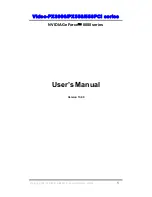
Chapter 7
The Big Picture: A Short History of World War II
153
When the Allies renew the offensive on May 11, four corps are thrown
forward
the U.S. II, the Polish II, the British XIII, and the French
Expeditionary Force. The twelve attacking divisions face only six
German divisions. While there is general progress all along the Gustav
Line, it is the French who finally crack the line for good. On May 14,
they break into the Ausente Valley and race towards the next German
line; they hope to crack this line before the Germans can settle into their
defensive positions. By May 16, only the Poles face determined
resistance, at the ruins of a monastery in Cassino; everywhere else the
Germans are falling back to their next line of defense. The Poles finally
capture the monastery at Cassino on May 18.
On May 23, the U.S. VI Corps slams into the German defenders at
Anzio. No breakthrough is achieved, but the Germans are pushed
steadily back. By May 25, the U.S. II Corps links up with the U.S. VI
Corps from Anzio; the threat of the Anzio forces on their flank causes
the Germans to withdraw further north.
Once the Allied forces begin to advance, General Clark shifts the axis
of the attacks toward Rome. This ensures the liberation of Rome in
early June, and also allows that Kesselring’s forces escape to their next
line of defense, the Viterbo Line north of Rome.
On June 5, 1944, the Allies roll into Rome. The thousands of Allied
vehicles entering the city cause a traffic jam so bad that the Allies are
unable to use their full strength to chase the retreating Germans. The
next line of defense for the Germans is the Gothic Line, 150 miles north
of Rome. By August 15, the Eighth and Fifth Armies are in contact with
the this line. However, the drain on resources for Operation Anvil (the
amphibious landings in southern France) forces the Allies to wait before
any attacks can be launched.
The value of air attacks and naval bombardment before landing is
proved in Italy
the toughest landing takes place where Clark has
ordered that naval bombardment not be used in order to achieve
surprise. Ground support from the air and bombing of the enemy’s
approaches to the battlefield continues to prove invaluable; the side
that commands air superiority over the battlefield definitely has the
advantage.
The Allies again encounter an enemy who is giving ground, but doing
so grudgingly. The Germans have not been routed. They prove to be
masterful at using terrain where a small force can easily hold up a much
larger one. This tactic
using the terrain to maximize the effectiveness
of small units
will be a major factor in the Normandy invasion. The
ferocity of the German troops is also a factor both in Italy and France;
not only do they contest ground stubbornly, they withdraw leaving
blasted bridges, land mines, and booby traps.
“Garand rifles giving superior
service to Springfield, no
mechanical defects reported or
stoppages due to dust and dirt
from foxhole use. Good gun oil
required as lubricant to prevent
gumming, but have been used
in foxhole fighting day and night
for a week without cleaning and
lubricating. All these weapons
are excellent ones...”
General Douglas MacArthur in
cablegram to General George
Marshall (February 20, 1942)
Содержание Close Combat
Страница 57: ...56 Close Combat ...
Страница 163: ...162 Close Combat ...










































